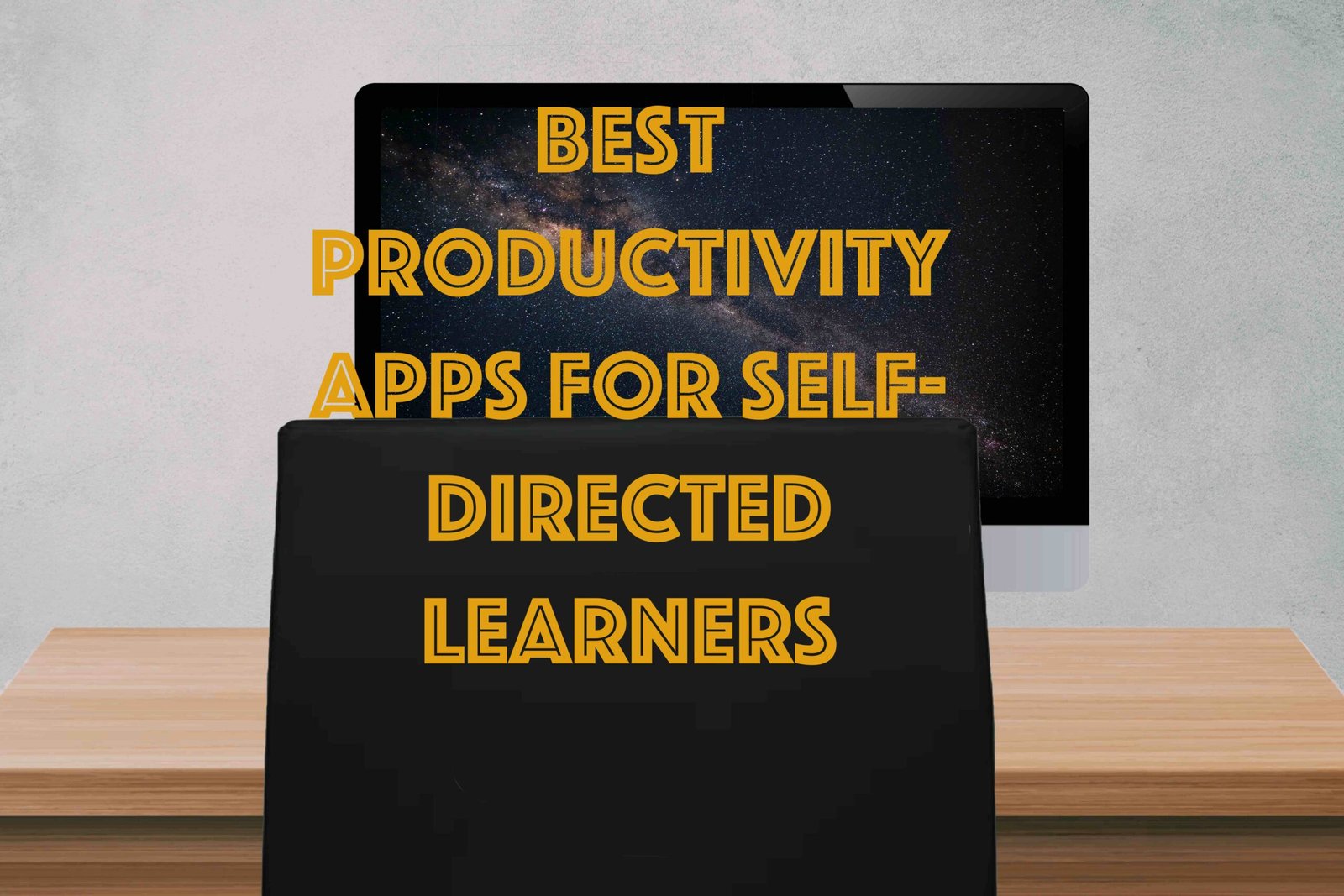In the fast paced evolving landscape, the digital tools and applications are revolutionizing the way self-directed learners learn and engage. Delving into tools for learning enhancement, there are potential technology to revolutionize on areas such as coding proficiency, language acquisition, and research methodologies. Utilizing the aid of these innovative resources, learners are poised to widen the intellectual pursuit, acquire mastery beyond traditional education and thrive in an increasingly digital world.
Leveraging on productivity apps
There are several compelling reasons for the adoption of the apps, aligning the evolving needs of education and the preferred methods of the modern learners as well as the students. Explore the benefits of using the apps and the revolution of the digital learning experience.
Accessibility and convenience
The advantage of these apps offers immediate access at anytime and anywhere, providing the flexibility to engage with the informative content that suit the lifestyle of an individual.
Personalised learning experience
The customization of the preferred learning experience can be tailored according to the interests, strengths, weaknesses, and schedules, enabling to adjust the interest and methods of the learning outcome.
Tracking progress
Most of these apps offers the features to track the progress and objectives. Learner can stayed motivated, adjust the learning methods, and monitor the progress with the aid of the feedback mechanism.
Interactive and engaging learning
Incorporating with interactive quizzes, gamification, and practical projects, this interactive approach helps to enhance the efficiency and engagement of learning process, resulting in better retention of information and application of knowledge.
Wide array of resources
Learner has the access to a vast amount of resources on different interests and skill acquisition, empowering the flexibility and acquisition of the knowledge base in multiples areas such as skills to academic subjects and language learning to programming.
Self-paced learning
Learner can learn at convenience, recapping the concept and moving on to the next project upon learning. This approach minimizes frustration and ensure better understanding of the subject matter.
Cost-effectiveness
There are many apps provide free or relatively inexpensive access to informative content that might otherwise be higher in cost. The attraction of lower cost lead to broader audience, making a significant change in education.
Lifelong learning
The necessity of continuous learning and upgrade of skill is paramount in this ever-changing digital world. The adoption of these apps helps in acquisition of skill and knowledge, supporting the concept of lifelong learning as the personal and professional interests evolve.
Community and collaboration
Some apps offer collaboration features and online communities such as forums, connecting with peers and experts for knowledge sharing and support. The aspect of the community can enhance the learning experience.
Read: Integrating Lifelong Learning into Daily Routines: A Practical Approach for Busy People
Maximize the potential of the best productivity apps
After an extensive analysis, we have consolidated a list of best tools that are designed to improve productivity, enhance learning, enhance organization, foster collaboration, and bolster wellness of the learner. Embarking on the advancement of the learning journey, these tools are tailored to the objectives effectively and efficiently.
Notion
Transforming the way of organizing tasks, information and projects with Notion. It serves as all-in-one for note-taking app where you can create, store, and organize the notes, databases, and project timelines, making it a versatile workspace for the learner to seek a centralized hub for the information. Average users may has learning curve from basic to advance. There is an add-on called Notion Web Clipper that allows to clip anything with a single click.
| Pros: – Highly adaptable to various needs – Excellent for team collaboration – Capable of creating customizable databases – Free plan offers ample features for individual entrepreneurs | Cons: – May be overly intricate for general use – Lacks functionality without an internet connection – Web clipping feature lacks refinement – Absence of several expected functionalities |
How much does it cost?
Notion has four levels of subscriptions.
Free
It offers a free plan for individual.
Plus
Plus comes with a monthly subscription of $8 or an annual fee of $96.
Business
Business comes with monthly subscription of $18 or an annual fee of $180.
Enterprise
Get in touch with Sales team on the pricing details for Enterprise.
Trello
Utilize the concept of Kanban board to manage and organize the projects and tasks visually. It has an intuitive board to categorize tasks, over view of the entire workflow, and monitor progress on various stages seamlessly, making it ideal for the management of multiple projects.
| Pros – Complimentary version offers many essential features. – Drag-and-drop interface is user-friendly. – Calendars and project timelines facilitate better overview. | Cons – The use of Kanban boards might not suit everyone. – The free tier limits file uploads up to 10MB. |
How much does it cost?
Trello offers four levels of subscriptions.
Free
The free tier is available at zero cost.
Standard
Standard tier costs $6 per month or an annual fee of $60.
Premium
Premium tier costs a monthly subscription of $10 or an annual fee of $150.
Enterprise
Enterprise tier costs a monthly subscription of $17.50 or an annual fee of $210. Contact Sales team for quotation if there is an estimated number of 50 users.
Obsidian
Obsidian is a strong contender among the note taking apps, offering local storage option, plugin compatibility and features such as markdown and customizable tool for knowledge management. It emphasizes on user data privacy by offering local storage solutions instead of cloud based options. New user may has steep learning curve due to the complexity of note interlinking function.
| Pros – Free tier for individual users. – Notes are saved on your device as simple text files. – Rich selection of plugins and themes – Offers various methods for categorizing and accessing notes. – Fully customizable interface and functionality. | Cons – Initial setup may be challenging for new users. – Lacks a web version. – Lacks built-in features for collaboration. |
How much does it cost?
Obsidian offers free tier for personal use, offering local storage, wide selections of plugins, customizable features and supports syncing across devices. However, the support for free tier is limited.
Commercial tier offers a license for $50 per user, it is designed for company. Prior to purchase, there is a 14 days trial period for the evaluation of the app. This option comes with the support from Obsidian team.
OneNote
OneNote allows users to create, organize, and share notes across devices, supporting drawings, text, and audio recordings. The flexibility and the freeform canvas allows the contents to be placed anywhere on the page. New users may have learning curve for a start.
| Pros – Access to all features in the free version. – Exceptional organizational tools. – Ability to freely place text, drawings, and attachments, along with a highly effective web clipper. | Cons – Limitation of local storage to the Windows platform. – Restricted OCR capabilities. – Absence of geotagging features. |
How much does it cost?
Microsoft account is required to use OneNote. This free account can access to most of the features and a limited storage of 5GB for One Drive storage to sync the notes across devices. It offers an optional Microsoft Office 2019 or Microsoft 365 subscription for the premium features.
Booster for focus, efficiency and security
Sometimes, it can be a challenge to stay focus with the distraction. There are another apps that can aid to boost the concentration and improve productivity. I think these apps can be helpful to certain extent depending on the individual’s needs.
Forest
Forest is designed to help users to stay focus and prevent them from using the mobile device within a specific period of time. This innovative app aid to promote distraction-free period by rewarding your dedication of learning with a growth of a forest in virtual world. It contains ads and comes with in-app purchase.
PomoDone
Leveraging the Pomodoro technique into a habit, the customizable settings can aid to focus on the work with intervals of short break to avoid fatigue and improve productivity. It offers detailed reports on work patterns to reduce distractions, boosting productivity and enhance time management.
Bitwarden
Bitwarden is password manager app. It is widely known for security features, offering end-to-end encryption to safeguard your passwords and sensitive data. The app can sync across devices.
| Pros – Utilizes AES-256 encryption for top-level security. – Offers a complimentary service tier. – Supports self-hosting options. – Compatible with various systems and platforms. | Cons – Desktop applications offer limited functionalities. – Lack of auto-fill functionality. – Lacks the provision for automatic data backups. |
How much does it cost?
Bitwarden caters three levels of subscriptions.
Free
Free plan comes with zero cost.
Premium
Premium plan costs less than $1 or an annual fee of $10.
Families
Families plan costs at $3.33 per month or an annual fee of $40.
In summary, these apps can cater the needs of flexibility, personalization and the accessibility to the learning outcome for the learners. This approach provide continuous learning for personal and professional growth.



